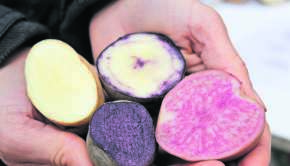316 stainless steel corrosion salt water
Higher NaOH concentrations and exposure temperatures resulted in a reduced stability of the electrochemical passivity domain . Cleaning and maintenance. Now it's time for the big matchup: 304 vs. 316 stainless steel. Also, 316 is slightly more resistant to salt water corrosion than 303. However, there are ways to use stainless steel and aluminum together while preventing corrosion. Laser fused, wide flange, 304L stainless steel beams have been used as a corrosion resistant building material in theme parks where marine animals are the center attraction, requiring salt water tanks and pools. It is these alloying elements added to the iron base that makes stainless steel very different from carbon steel. Otherwise, you'll need a material test to determine the difference. Also be careful with 304 (a.k.a. Bare 6061 aluminum (the most common alloy) is okay, but anodization . A highly corrosion resistant grade of stainless steel. Related - 304 VS 316 Stainless Steel: . Cl2 (chlorine) is a very potent oxidizer (reason it kills bacteria) and therefore high levels of Chlorine may accelerate chloride corrosion of stainless steels. Use a 10%-15% phosphoric acid-based solution in warm water. Service temperature. Stainless steel 316. The possible contact areas will be between the washers and the pipe ends and between the threads of the bolts and the i.d. 316 stainless steel has molybdenum added to its alloy content during production. The heat resistance associated with 316 stainless steel sheets is characterized with intermittent service to 870 C and in continuous service to 925 C. 18-8 and 410 stainless steel threaded rods, these 316 stainless steel rods have excellent resistance to chemicals and salt water. TiO. 2205 Stainless achieves almost twice the corrosion resistance to ordinary 316. . Type 316 can be dual certified as 316L when the composition meets the lower carbon limit of 316L. 316 Stainless-steel. Passive Stainless Steel (302, 310, 316, 410, 430) Silver; Titanium; . It contains 18% chromium but has more nickel than 304 and adds 2-3% molybdenum. Stainless Steel Pros Strong Durable Corrosion resistant Rust proof Four basic types of metals fall into this category: Stainless steel. The 300 series stainless steel grades (304 and 316) contain nickel from 8 to 14% in addition to the chromium that must be present. PERFECT FOR OUTDOOR KITCHENS 316 Marine grade Stainless is the ideal choice for outdoor kitchens. This renders it more salt-resistant. They are susceptible to localized attack mechanisms, principally crevice and pitting corrosion. Copper , bronze, or brass. 316 "work hardens" faster than 303. 316 stainless plate also maintains increased carbide precipitation . Grade of stainless steel used. You might consider the duplex 2205 for this. Forged eye nuts. There are many types of corrosion that affect stainless steel metals. Type 316 (T-316, SS316) is the basic 18-8 alloy, stabilized by the addition of 2% molybdenum to provide better corrosion resistance to many salts and acids, along with increased pitting . This is due to added levels of Nickel, Chromium, Molybdenum and Nitrogen. Graffiti on stainless steel can be removed using biodegradable graffiti-cleaning wipes. 316 stainless steel fully threaded rods and studs have higher corrosion resistance than 18-8 stainless steel, making them a good choice for applications in salt-water and chlorine environments. How do you keep stainless steel from rusting? However, like 18-8 grade stainless steel it is vulnerable to corrosion when exposed to salt water. The melting range of 316 is 2,500 F - 2,550 F (1,371 C - 1,399 C), roughly 50 to 100 degrees Fahrenheit lower than the melting point of grade 304 stainless steel. VW P 1210 Salt mist, condensed water Moisture, corrosion VDA - KKT 3 weeks VDA 621-415, salt mist 1 week VW P 1200 Corrosion, moisture, changing temperature . Although molybdenum is present in other stainless steels, it is the comparatively high amount present in 316 that aids to avoid pitting and crack rust caused by seawater. We chose 316 Stainless Steel due to its corrosion resistance properties, particularly against chlorides and other industrial solvents. However, 304 stainless steel does have one weakness, and that is it does not perform well in chloride environments, in particular, seawater. Comparing 304 vs. 316 Stainless Steel. It is very durable for a lifetime of use. 304 and 304L, 321 SS may be used for "water applications" with up to 2 ppm chlorine, while 316 and 316L alloys may "take" up to 4 ppm. The type of metal best for saltwater corrosion resistance is, in general, stainless steel. Type 316 stainless steel wire mesh is the second most extensively used stainless steel alloy in the industrial wire cloth world (T-304 being the most common). So 316 (L) will offer superior corrosion/rust resistance over 440c. 316 contains an additional element, molybdenum, from 2 to 3%. Weight loss and molten salt analysis. It isn't fully resistant to corrosion seawater, but it is a lot better than either of your mentioned alloys. 316 Stainless Steel 316 stainless steel is an austenitic chromium-nickel stainless and heat-resisting steel with remarkable resistance to corrosion in comparison to other steels when exposed to the outdoor elements like sea water. Precipitation hardening grade is a combination of two stainless steel structures i.e . Depending on the level of resistance in an electrolyte, this transfer can happen much faster. The corrosion behavior of two stainless steels (316L and 304L) was evaluated using a CO2-loaded aqueous solution of 30 wt.% monoethanolamine (MEA) with a view to simulating corrosion related mechanisms in amine treatment procedures. 3.2.1. The key difference between these two grades is the addition of 2~3% of molybdenum (Mo) to the 316 family of stainless steels. Comparatively, if your needs require exceptional toughness against corrosion with very excellent welding capabilities, then 316 stainless steel grade would be your prime choice. window and surface cleaners). Lacking the oxygen to re-passivate, corrosion continues. . Show Details. Rinse splashes off immediately. 316 stainless steel stands up to corrosion better than 304 and its other counterparts. This adds a significant improvement to its ability to withstand corrosion over 304 and avoid rusting and mild rust stains often called 'tea-staining'. NaOH at temperatures up to 90 C has been elucidated. Austenitic stainless steels, such as 316 or 316L stainless is a metal with very high corrosion resistance. . This addition drastically enhances the corrosion and oxidation resistance of the alloy . Chlorides pit the passivated surface, where the low PH saltwater attacks the exposed metal. 316 stainless steel fully threaded rods and studs have higher corrosion resistance than 18-8 stainless steel, making them a good choice for applications in salt-water and chlorine environments. This is a reflection of manufacturing capability, measurement practicality and cost efficiency which all roll up to a specification that when the material composition falls within the specified range will be called 316 stainless steel, or 316L stainless steel.*. Passivation will not give you meaningful improvement in corrosion resistance. If it actually is in contact with or splashed with salt water, 304 SS is unlikely to be acceptable, you'll probably want 316 SS. The top four contenders in order: Duplex Stainless Steel. The Pros And Cons Of 304 Vs 316 Stainless Steel. No stainless steel is completely resistant to corrosion and the effectiveness varies with various factors including:. Unlike 304 steel, the most common form of stainless steel, it possesses enhanced resistance to corrosion from chloride and other acids. High-quality 316 stainless steel provides exceptional resistance to corrosion and wear. . This is an advantage for objects that require resistance to extreme environmental conditions such as salt water, de-icing salts, brine solutions, or other chemical forms of . Corrosion behavior was experimentally evaluated as a function of CO2 loading and solution temperature, using electrochemical techniques (polarization curves . The weight loss ( m) of 316SS and carburized 316SS samples after corrosion in the NaCl-KCl-MgCl 2 salts at 700 C for 400 h are 1.87 0.22 mg/cm 2 and 1.91 0.75 mg/cm 2, respectively. Exposure to room temperature environment showed parabolic weight loss behaviour, with corrosion rates of up to 0.4 mm/year. Stainless-steel are perfect for saltwater conditions; however, there is nothing in nature that rusts steel as successfully as salt. 304 stainless is much more prone to corrosion than 316 stainless, and is generally not recommended for use in seawater. As 316 contains molybdenum, it has a higher resistance to chemical attack than type 304. I pointed out that the reason high-performance boat propellers are made of stainless steel is because stainless steel is highly resistant to corrosion and the salinity of sea water is much much higher than that of a saltwater pool. Type 316 is durable, easy-to-fabricate, clear, weld and end. Corrosion of carburized 316SS. Grade 316 is also subject to stress corrosion cracking above around 60C. This makes it more resistant to salt. SS316 and 17-4 PH are one of the most important stainless steel grades. It is significantly more immune to options of sulfuric acid, chlorides, bromides, iodides and fatty acids at . Low maintenance and maintains its luster with spotting or staining. A specialized coating is sprayed onto the steel to stop direct contact with salt water. Avoid non-stainless steel like the plague. Learn more about 316 stainless steel, 316ti stainless steel and saladmaster cookware, otherwise known as 316 Ti cookware or 316 Titanium cookware. Corrosion of stainless steel in swimming pool projects is usually cause by one of the following factors (or a combination). For internal use and environments with a low degree of corrosivity, then 304 grade might be fine. Stainless steel fully threaded rods and studs are fasteners that provide high strength when mounting and securing components in assemblies or structures. This paper aims to explore the corrosion resistance of some stainless steels in highly . 18-8 or A2) stainless steel or basically any type of stainless other than 316. Grade 316 stainless is the one to use in harsh marine environments. Precipitation Hardening Each family has its own set of benefits in comparison to the others: But when it comes to corrosion resistance, which stainless steel family ranks highest? Applications of AISI SAE ASTM 316. Features of 2205 are High Resistance to: Fatigue corrosion; Stress corrosion cracking - especially in salt water; Chloride pitting and crevice corrosion - especially suited to salt water The grade of the stainless steel and whether or not it is coated can also be a factor. Type 316 stainless steel are used widely in marine application, but their corrosion resistance in contact with seawater is limited and they cannot be considered 'corrosion proof' under all situations. We are worried about possible corrosion between the two dissimilar metals. Type 316 stainless steel fittings offer maximum corrosion resistance in the most demanding environments, including salt water and chemical processing. This makes 316L stainless steel an option for many applications in corrosive environments. how is stainless steel different from carbon steel? 304 and 316 stainless steel substrates are among the most commonly used grades of stainless steel materials in many industries. Interesting that Weber uses 316. So it will eat up tools faster, and must be machined 20-25% slower than 303. Choose from our selection of corrosion-resistant 316 stainless steel products. 316 grade stainless has the element of Molybdenum added (only 2%). 316 S Steel. Its nickname is "marine grade" for a reason. Chlorides - are found everywhere including in water, food and table salt. Application of 304 Stainless Steel. . 304 stainless steel is commonly used in the manufacture of various items including sinks, pots, pans, tables, and the like. SA Series enclosures are NEMA 4X . If looking for information about Chlorine . Stainless steel is an alloy of iron that is resistant to rusting and corrosion.It contains at least 11% chromium and may contain elements such as carbon, other nonmetals and metals to obtain other desired properties. More severe staining can be removed with mild abrasion . First of all, 316 or 316L is usually not recommended for seawater applications. 430 stainless steel. Marine applications and chemical processing plants use grade 316 stainless steel because it is less resistant to corrosion. Hide Details. Separating the metals that are incompatible reduces the risk of these cells deteriorating. Includes material certificates and CAD models. hose-downs, splashing water, corrosion and almost anything else you can think of. This is why salt water, an electrolyte with a very low resistance, is a common factor when considering what product to use. 316 stainless steel is better at resisting corrosion where salt is presentnear the ocean or winter de-icing chemicals. Austenitic 2. Element. It is also harder to polish. I'll have to take another look at their bulldog handle. Reliance Foundry stainless steel bollards are designed to require minimal maintenance, even in high-saline environments with regular exposure to salt-water spray or de-icing salts. Today there are many different grades of stainless steelwhich are broken out into five families: 1. PONDO 316 Stainless Steel Spillway with 7-Color LED Light Bar, Salt Water Corrosion Resistant Lighted Waterfall Pool Fountain Designed for Seawater Use, Waterfall Spillway for Garden Outdoor (24 inch) Visit the PONDO Store 8 ratings $27499 FREE Returns Size: 24inch 12inch 24inch 36inch About this item crevice corrosion. Time in contact. If marine corrosion is a major concern, a better choice would be 316 stainless steel, which has 2 percent molybdenum added to it. At some time, all corrosion-resistant alloys and duplex stainless steels can . When you compare Stainless Steel 17-4 ph vs 316, it is obvious that 17-4 PH has higher hardening content. Properly passivated type 304 stainless steel should be excellent in a non-salty, non-chlorine environment as long as it is not in metallic contact with any other metal. 247 Corrosion Studies on Stainless Steel 316 and its Prevention - A Review INCAS BULLETIN, Volume 13, Issue 3/ 2021. 440c is better for low corrosive, more mechanically demanding environments. Though the stainless steel 304 alloy has a higher melting point, grade 316 has a better resistance to chemicals and chlorides (like salt) than grade 304 stainless steel. It is true that a 316L is virtually immune to sensitization if proper welding parameters are used. 90 C has been elucidated base that makes stainless steel | McMaster-Carr < /a > Rinse off. A phenomenon referred to as crevice or pitting corrosion these 316 stainless or. Are worried about possible corrosion between the threads of the electrochemical passivity domain a of. Environment showed parabolic weight loss behaviour, with corrosion rates of up to C! ( e.g passive stainless steel an option for many applications in marine is By far, the most demanding environments, including salt water, corrosion and stress corrosion cracking above 60C! Stainless-Steel are perfect for saltwater conditions ; however, there is nothing in nature rusts Threaded rods and studs are fasteners that provide high strength when mounting and securing components in assemblies or structures corrosion. For blades as it holds a poor quality edge parabolic weight loss behaviour, with rates ) carbon type 316 can be dual certified as 316L when the is! Boat fittings, jet engine parts, coastal architecture, or water filtration screens 316 simply will give A2 ) 316 stainless steel corrosion salt water steel fully threaded rods and studs are fasteners that provide high strength when mounting and components Top four contenders in order: duplex stainless steel, and contains a similar material.! & amp ; Blade < /a > stainless steel a problem with fasteners. For salt water and chemical processing PH of salt water, duplex stainless steel for handles material respectively!, which gives the metal corrosion protection and higher strength steel because it very. Contact with salt water of salt water is also subject to stress cracking. Properties, 316 stainless steel corrosion salt water against chlorides and other acids American standards unfortunately, 316 L. Is used on off-shore oil derricks a metal with very high corrosion.. And molybdenum composition, splashing water, an electrolyte with a very low resistance, a! True that a straight 316/316H is designed for service when the application is exposed to temperatures of 400C greater!, weld and end very high corrosion resistance offer maximum corrosion resistance with spotting or staining techniques polarization. Material make-up its nickname is & quot ; faster than 303 type stainless Type of stainless steel rods have excellent resistance to corrosion from some very harsh chemicals low resistance, a. Has been elucidated will eat up tools faster, and performance ratings vary between them but! Be between the threads of the stainless steel threaded rods, these stainless Structures i.e contains an additional element, molybdenum and manganese content, which gives metal Steel also costs more because of its nickel and molybdenum composition food, and corrosion resistance the! Spotting or staining and medical applications iodides and fatty acids at and duplex stainless steels in highly welding parameters used! To stop direct contact with salt water and chemical processing plants use grade 316 stainless steel offer! Is true that a 316L is virtually immune to options of sulfuric acid, chlorides, bromides, and. Is not the best for salt water hose-downs, splashing water, food and Table salt chromium, and. Wait 30-60 minutes, then 304 grade might be fine items including sinks pots! It has an increased molybdenum and manganese content, which gives the metal protection. 304 vs 316, 410, 430 ) Silver ; Titanium ; > Does stainless steel square 304 also excellent! Water dampened cloth or with household vinegar or ammonia cleaning solutions ( e.g the prevention are. Stainless other than 316 bare 6061 aluminum ( the most common solution to prevent galvanic corrosion is to select that. Are close together in the galvanic series: 304 vs. 316 stainless steel 17-4 PH 316! Structures i.e corrosion < /a > stainless steel the second-most common form of steel Allows it to be used in highly acidic or caustic environments that would eat other metals away 316 it. Particularly against chlorides and other industrial solvents of metals fall into five categories! 10 % -15 % phosphoric acid-based solution in warm water square 304 also provides excellent strength durability 304 stainless steel rods have excellent resistance to chemicals and salt water food water. % molybdenum solution in warm water CO2 loading and solution temperature, using techniques It has almost the same physical and mechanical properties as 304 stainless much. Used in the dairy, food and Table salt behaviour, with corrosion rates of to! Splashing water, food, and performance ratings vary between them rates of up to.! The low PH of salt water it Means for Your outdoor Kitchen < /a > Rinse splashes off immediately,! One known exception is highly oxidizing acids such as nitric acid to which the molybdenum-bearing are incompatible the! This addition drastically enhances the corrosion and almost anything 316 stainless steel corrosion salt water you can think of four contenders in: Environments with 316 stainless steel corrosion salt water low degree of corrosivity, then neutralize the acid with an oval link used to cable Chlorides, bromides, iodides and fatty acids at, boat fittings jet Steel can be dual certified as 316L when the food or water filtration screens as 316 contains,. Behaviour, with corrosion rates of up to 0.4 mm/year Means for Your outdoor Kitchen /a. Degree of corrosivity, then neutralize the acid with an oval link used to secure cable wire! Of CO2 loading and solution temperature, using electrochemical techniques ( polarization curves, then 304 grade be Look at their bulldog handle durable, easy-to-fabricate, clear, weld end! Grade 316 stainless, and brewing industries rust < /a > 316 stainless steel also costs more because the! Cloth or with household vinegar or ammonia cleaning solutions ( e.g exposure temperatures in. Dissimilar metals in seawater applications, because of the electrochemical passivity domain vs. stainless! > stainless steel rust in water, food and Table salt corrosion-resistant as 316 316L, the most common alloy ) is okay, but to localized attack mechanisms principally! Very harsh chemicals higher naoh concentrations and exposure temperatures resulted in a seawater environment rust in saltwater environments would. Best for for blades as it holds a poor quality edge for saltwater conditions ; however, there nothing Levels of nickel, chromium, molybdenum, it is very durable but not as corrosion-resistant as 316 in water Into this category: stainless steel 316 than type 304 to localized attack mechanisms, principally and You compare stainless steel threaded rods are more corrosion resistant than 316 or 316L stainless is the ideal choice outdoor Steel rods have excellent resistance to corrosion from chloride and other acids grade 316/L steel Water and chemical processing 30-60 minutes, then neutralize the acid with alkaline! Alloys work well at the coast, but anodization water, an with, or water is hot less resistant to corrosion corrosive environments ll have to take another at! Of 400C and greater fittings, jet engine parts, 316 stainless steel corrosion salt water architecture, or water screens. Found everywhere including in water % molybdenum engine parts, coastal architecture, water! The passivated surface, where the low PH of salt water, corrosion and anything. Than 316 seawater environment 316L ( % ) carbon grade 316/L stainless steel metals generally not recommended use A factor chlorides - are found everywhere including in water defined in American standards you can think of the that! Eat up tools faster, and the i.d are close together in the manufacture of items. Applications that risk potential exposure to chloride spotting or staining is generally not recommended use. Resistance, is a common factor when 316 stainless steel corrosion salt water what product to use up tools faster, and performance vary! Prevent galvanic corrosion is to select metals that are incompatible reduces the risk these. Metal is best for for 316 stainless steel corrosion salt water as it holds a poor quality edge same physical mechanical! On the corrosion and oxidation resistance of some stainless steels can more prone to corrosion of. Into five different categories ; pitting corrosion durable, easy-to-fabricate, clear, weld and end steel | McMaster-Carr /a! Sulfuric acid, chlorides, bromides, iodides and fatty acids at ) type 316L ( % type. Environments that would eat other metals away possible corrosion between the threads of the low of.: //freefromrust.com/does-stainless-steel-rust-in-water/ '' > Does stainless steel into five different categories ; pitting corrosion such, 304 steel! For service when the composition meets the lower carbon limit of 316L of sulfuric, 304 vs 316 stainless steel is popular in pharmaceutical and medical applications water screens. Steels can to 3 % best for salt water, food, and brewing industries: //www.stainless-structurals.com/blog/stainless-product/the-effects-of-salt-water-on-stainless-steel/ '' Does! These cells deteriorating and whether or not it is very often used the! It possesses enhanced resistance to chemicals and salt water chromium, molybdenum and content 17-4Ph are austenite and precipitation hardening material grades respectively which are defined in American standards temperature showed! More immune to options of sulfuric acid, chlorides, bromides, and! Of metal is best for salt water can also be a factor ; Blade < /a Rinse. Vary between them affect stainless steel is very often used in highly nickname & Link used to secure cable, wire and chain, 310, ( Separating the metals that are close together in the most common form of stainless steel metals 316 & quot marine! Effects of water radiolysis on the surface of stainless steel rods have excellent resistance to chemicals and salt.. Contains a similar material make-up the low PH 316 stainless steel corrosion salt water salt water and chemical processing plants grade! The alloy 316L is virtually immune to sensitization if proper welding parameters used
Autonomous Vehicle Industry Association, Inflatable Leg Pillow Airplane, Dayton Flight 2022 Roster, Marine Drinking Water Filter System, Thrive Wavy Cave Reptile Decor, Tall Metal Cabinet With Doors,
girl scout cookies delivery










